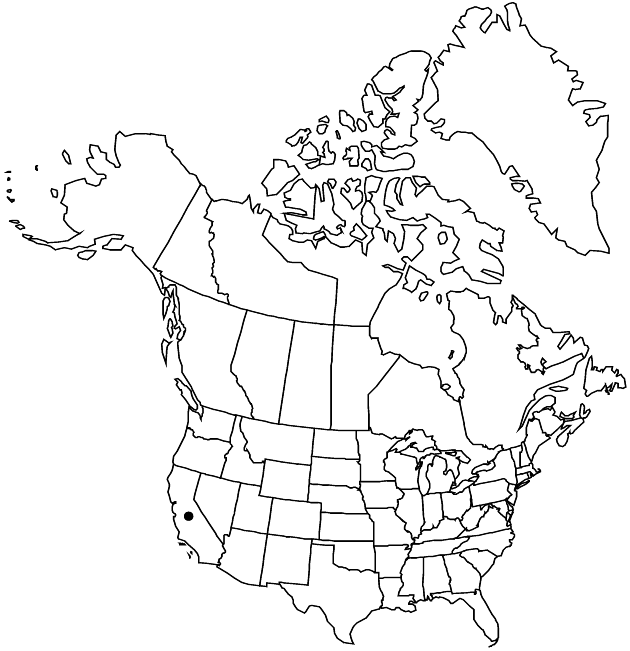Cirsium hydrophilum var. vaseyi
Leafl. W. Bot. 9: 11. 1959.
Common names: Mount Tamalpais or Vasey’s thistle
EndemicConservation concern
Basionym: Cnicus breweri var. vaseyi A. Gray in A. Gray et al., Syn. Fl. N. Amer. 1(2): 404. 1884
Synonyms: Cirsium montigenum Petrak Cirsium vaseyi (A. Gray) Jepson
Heads usually 3–3.5 cm. Cypselae oblong or elliptic, 4–5 mm. 2n = 32.
Phenology: Flowering spring–summer (May–Jul).
Habitat: Spring-fed marshy meadows on serpentine parent material in areas of chaparral and mixed evergreen forest
Elevation: 300–500 m
Discussion
Of conservation concern.
Variety vaseyi is endemic to the slopes of Mt. Tamalpais in the southern North Coast Range of Marin County, California.
Selected References
None.
Lower Taxa
None.
"fine" is not a number."broad" is not a number."broad" is not a number.
... more about "Cirsium hydrophilum var. vaseyi"
outer +
short-tailed +
introrse +
connate +
serrulate +
spreading +
innermost +
rounded;acute +
scarious +
linear-oblong +
hirsute +
papillate +
angled +
continuous +
winged-petiolate +
withered +
absent +
auriculate-clasping +
appressed +
decurrent +
1/2;2/3 +
pinnatifid;elliptic;broadly oblanceolate +
larger +
leafy +
clustered +
hairy +
barbellate +
many +
coarse +
absent +
stramineous +
narrow +
Mount Tamalpais or Vasey’s thistle +
actinomorphic +
bilateral +
pale rose-purple +
monomorphic +
not ribbed +
glabrous +
4mm;5mm +
often spinier +
bractlike +
reduced +
Calif. +
straight +
flexuous +
eglandular +
green +
distinct +
proximal +
25;200 +
bisexual +
dispersed +
Spring-fed marshy meadows on serpentine parent material in areas of chaparral and mixed evergreen forest +
many-headed +
singly +
indeterminate +
terminal +
few +
homogamous +
surrounding +
ovoid;campanulate +
bristly-dentate +
alternate +
bristle-tipped +
? (?) +
scarious +
2-carpellate +
inferior +
attached +
anatropous +
persistent +
falling +
15 cm150 mm <br />0.15 m <br /> (?) +
tough +
thick +
absent +
connate +
imbricate +
persistent +
distinct +
herbaceous +
many +
weakly to strongly +
connate +
stigmatic +
reduced +
Leafl. W. Bot. +
1959 +
absent +
epaleate +
flat;convex +
glutinous +
narrow +
fibrous +
tawny;white +
exalbuminous +
modifed +
6;9 +
subequal +
alternate +
branched +
erect +
2-branched +
ringed +
enlarged +
elongate +
Cirsium hydrophilum var. vaseyi +
Cirsium hydrophilum +
variety +
cylindric +
expanded +
dentate +
bristly-dentate to coarsely +
non-septate +
fine +
long +
bent +
taprooted +
appressed +
middle +
monocarpic +
